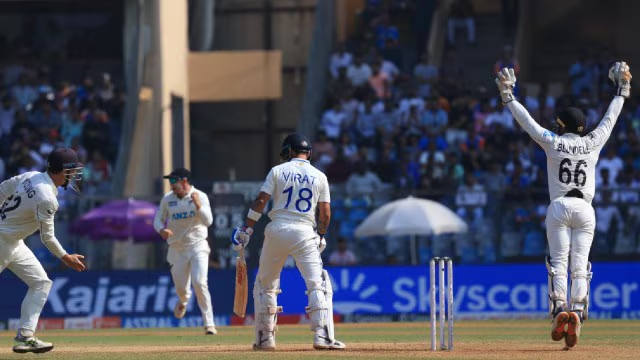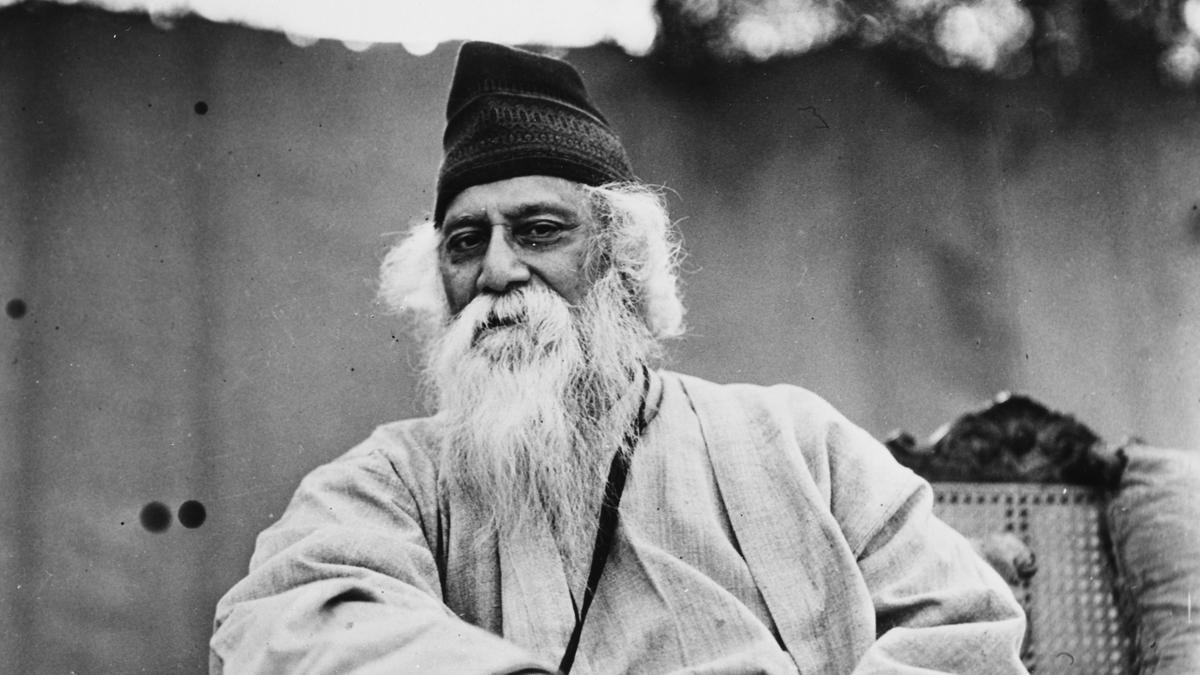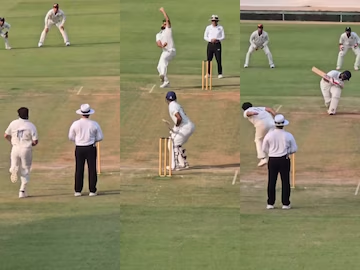Pitch debate: After debacle against NZ, WV Raman says give Ranji-type pitches for home Tests

Sivaramakrishnan advises batsmen to adapt to the differences between Test tracks and domestic cricket surfaces, emphasizing the need to play off the backfoot. A former opener highlights the dissimilarity between the two types of pitches.
The absence of skipper Rohit Sharma and Virat Kohli from domestic cricket for the past ten years was considered a contributing factor to their struggles in navigating spin-friendly pitches during the 0-3 defeat at home against New Zealand. However, even players like Yashasvi Jaiswal and Sarfaraz Khan, who have actively participated in the Ranji Trophy in recent years, failed to deliver when it was most crucial.
In WV Raman’s opinion, the pitches used in home Test matches differ significantly from the ones players face in domestic cricket. He advocates for playing Tests on classic pitches that align with what upcoming batsmen are accustomed to.“Why are we not giving the conditions we get in domestic cricket for Test matches?” Raman counters when asked whether the BCCI should prepare spin-friendly decks in Ranji Trophy.
The emerging crop of Indian batsmen, groomed in a competitive domestic setup, seldom find themselves facing the challenge of batting on traditional Test-match turners due to the prevalent pitch conditions.
Raman questions why there is a focus on providing turning tracks in domestic cricket instead of ensuring quality pitches for Test cricket. He emphasizes the strength of the Indian pace attack and challenges the notion that their bowlers cannot take 20 wickets in favorable conditions, particularly considering the proficient spinners in the team.
In the last ten years, it has been uncommon to witness teams deploying sharply turning pitches in domestic matches due to the BCCI implementing several directives to discourage this trend. Following the humbling 0-4 defeats in England and Australia during the 2011-12 season, the board’s technical committee mandated a minimum of 6mm grass cover on pitches starting from the 2014-15 campaign.
In the subsequent season, the practice was halted due to objections raised by state units and players. Subsequently, in the 2016/17 season, BCCI implemented a fresh format wherein league games were conducted at neutral venues. It was recommended to retain 3mm of grass on the pitch under the supervision of neutral curators for Ranji Trophy matches, even though there was no formal regulation in place.
Raman points out that our tendency is often reactive. He uses the example of the ineffective 6mm grass rule in Indian cricket, which resulted in decent medium pacers being perceived as formidable bowlers. Consequently, batsmen’s confidence wavered, and spinners were marginalized in the game. According to Raman, this situation, which arose nine seasons ago, has led to a scarcity of quality spinners and a decline in batsmen’s proficiency against them.
Recently, the disappearance of rank turners can be attributed to the presence of neutral curators, marking a shift from the past where players navigating the domestic grind encountered a mix of conditions such as seaming green decks and challenging turners.
Raman questions why there is a sudden awakening in Test cricket results when there is typically caution against offering unready pitches to host associations.
He remembers the commotion that ensued whenever a domestic cricket team presented a lively spinning pitch. “Whenever a track favoring spin was prepared in domestic cricket, it would cause a stir nationwide. Our present group of batsmen didn’t magically appear. They emerged from the same system. All they need are suitable pitches to display their talents,” he contends.
Key players, not pitches, are crucial.
Raman, who has a vast coaching experience in both domestic and international cricket, is of the opinion that altering pitches in the Ranji Trophy will not be beneficial.
Considering the recent past, excluding the Duleep Trophy, how many players among them have participated in 4-day or 5-day matches? The current international timetable is quite packed, leaving limited room for such games. This aspect warrants our attention as well. It’s not just about the quality of pitches provided during domestic matches but also about how often these players engage in red-ball cricket.
Laxman Sivaramakrishnan, a former leg-spinner from India, has expressed concerns about the diminishing quality of spin bowlers and the declining ability of batsmen to face them in recent years. He cautions that constantly playing on excessively turning pitches could have a negative impact on the development of spin bowlers.
[Rephrased]: On pitches tailored to favor a particular team, the pitch itself becomes the key player, requiring minimal effort from the batsman. Success then hinges on the ability to consistently place the ball well. Advocating for India to compete on fairer pitches that test their true skill, the sentiment is clear.
When it comes to the capacity of batsmen to handle spin on such surfaces, Siva points out the root of the issue. “The majority of Indian batsmen tend to favor the front foot. On a spinning pitch, engaging the front foot gives the spinner a significant advantage. By meeting the ball early, you confront it while it’s still turning, using a firm grip. Conversely, utilizing the back foot permits the ball to spin before selecting your stroke.
Sivaramakrishnan, known for his role in helping Sachin Tendulkar overcome Shane Warne in the 1998 home series, cites former Indian opener Navjot Singh Sidhu as an example to emphasize his point. He highlights Sidhu’s prowess against left-arm spinners, recommending the tactic of playing off the backfoot to induce the bowler to adjust their length. While Tendulkar receives much praise, it was Sidhu who first employed this strategy against Warne. Sidhu dedicated extensive practice to mastering playing off the backfoot to deliveries of good length, capitalizing on fuller deliveries from Warne. Sivaramakrishnan underscores that surface conditions are secondary to how batsmen fare against spinners, emphasizing the importance of utilizing the crease effectively.
Sivaramakrishnan, renowned for assisting Sachin Tendulkar in overcoming Shane Warne during the 1998 home series, cites former Indian opener Navjot Singh Sidhu as an illustration. Emphasizing the strategy against left-arm spinners, he highlights the effectiveness of playing off the backfoot to unsettle the bowler’s length. While Tendulkar often receives credit for this tactic, Siva credits Sidhu for pioneering it against Warne. By honing his skills to handle good-length deliveries off the backfoot, Sidhu forced Warne to adjust and subsequently capitalized on fuller deliveries. Siva stresses that regardless of the playing surface, success against spinners hinges on adeptly utilizing the depth of the crease.













